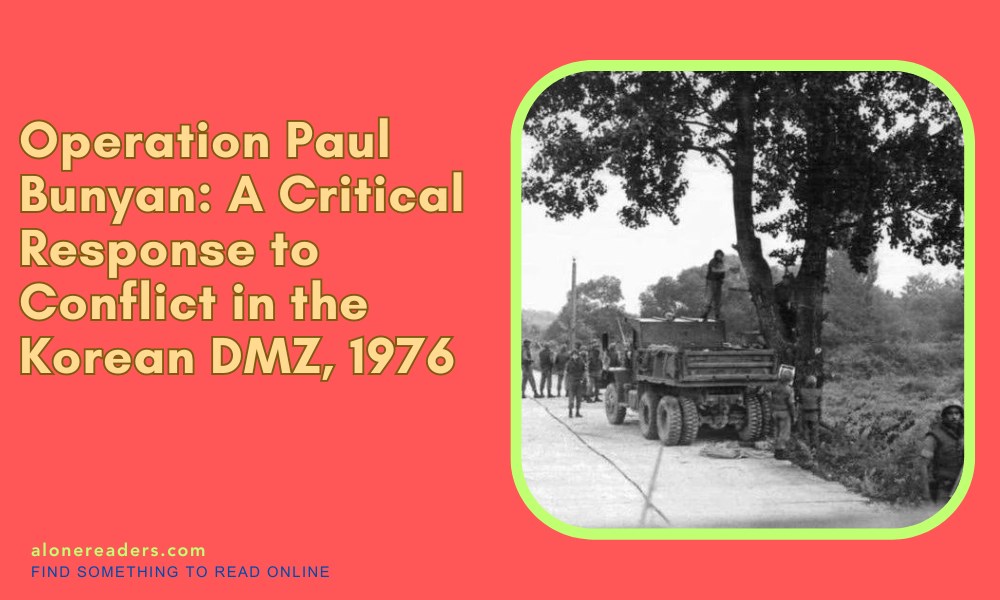
In the annals of military history, few incidents showcase the volatile nature of geopolitical conflicts as starkly as Operation Paul Bunyan. This operation was a decisive show of force by the United States and South Korea in response to a lethal altercation in the Korean Demilitarized Zone (DMZ) in 1976, an event that starkly highlighted the ongoing tensions on the Korean peninsula.
The roots of Operation Paul Bunyan lie in a seemingly mundane act: tree trimming in the DMZ, a buffer zone established to separate North and South Korea at the end of the Korean War in 1953. This area, fraught with political tension, became the unlikely stage for a deadly confrontation on August 18, 1976. Two American soldiers, Captain Arthur Bonifas and First Lieutenant Mark Barrett, were killed by North Korean forces during a routine operation to trim a poplar tree that obstructed the view between United Nations Command (UNC) checkpoints and observation posts.
The killings were not merely a tragic loss of life but a clear violation of the armistice agreement that had maintained a tenuous peace on the peninsula. The United States and South Korea perceived it as a direct challenge to their authority and presence in the region. In response, they launched Operation Paul Bunyan, named whimsically after the mythical American lumberjack, symbolizing the primary task of cutting down the contentious tree.
The operation commenced on August 21, 1976, just three days after the fatal incident. It was a carefully calibrated display of military might intended to assert control and deter further aggression without escalating into broader conflict. The execution was extraordinary: a convoy of 23 American and South Korean vehicles moved into the DMZ, accompanied by troops armed with chainsaws to fell the tree.
However, the operation's scale went far beyond a simple landscaping task. It involved an unprecedented show of force. Around 813 troops were deployed, including South Korean special forces known as the "Tiger Division," and an American infantry company. The spectacle was bolstered by a formidable array of military hardware: tanks, armored personnel carriers, artillery pieces, and helicopters. Offshore, a U.S. aircraft carrier group patrolled, ready to provide additional support.
The response from North Korea was surprisingly muted. Observers from the North watched the operation unfold from a safe distance, with no direct confrontations occurring during the tree-cutting. This restraint was possibly influenced by the overwhelming force displayed by the U.S. and South Korea, which left little doubt about their readiness to defend their position.
The successful completion of Operation Paul Bunyan marked a significant moment in the Cold War's theater in Asia. It not only reaffirmed the resolve of the U.S. and South Korea to maintain their presence in the DMZ but also demonstrated their capability and willingness to use significant military resources in defense of their policies and personnel.
In the aftermath, tensions in the Korean Peninsula remained high, but the incident led to some diplomatic communications between the North and the U.S., highlighting the complex interplay of military deterrence and diplomatic negotiation. The North Korean leader, Kim Il Sung, reportedly expressed regret over the incident, which some analysts interpret as a move to de-escalate the situation and avoid further conflict.
Operation Paul Bunyan stands out as a critical episode in the history of U.S. military engagements in Asia. It underscores the challenges of maintaining peace and stability in a region where historical grievances and political ambitions frequently collide. More importantly, it serves as a case study in how force, when judiciously applied, can serve not only as a means of conflict but also as a deterrent and a tool for maintaining the status quo in international relations.
This operation, while a specific response to a unique incident, continues to inform the strategic calculus of both the United States and South Korea in dealing with provocations from North Korea. The legacy of Operation Paul Bunyan is a testament to the enduring nature of military readiness and the constant negotiation between show of strength and diplomatic restraint in international conflicts.